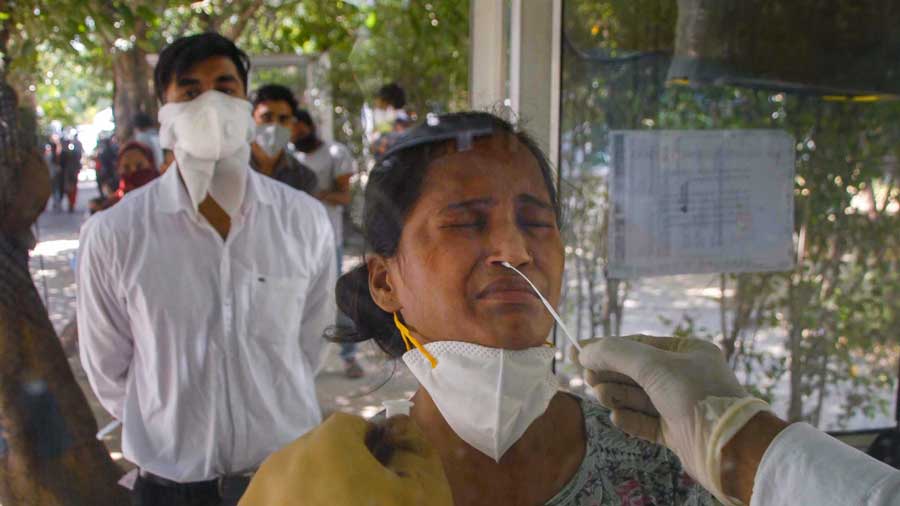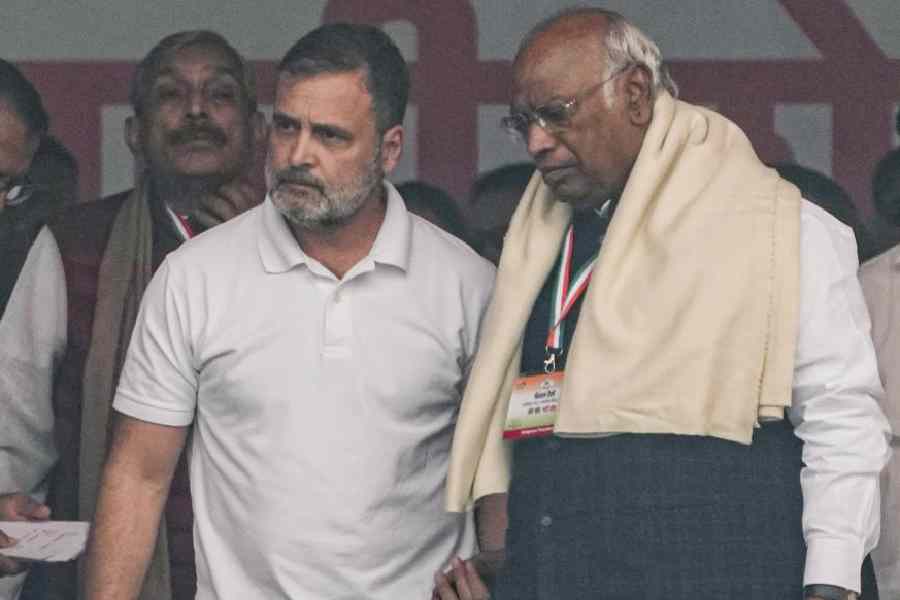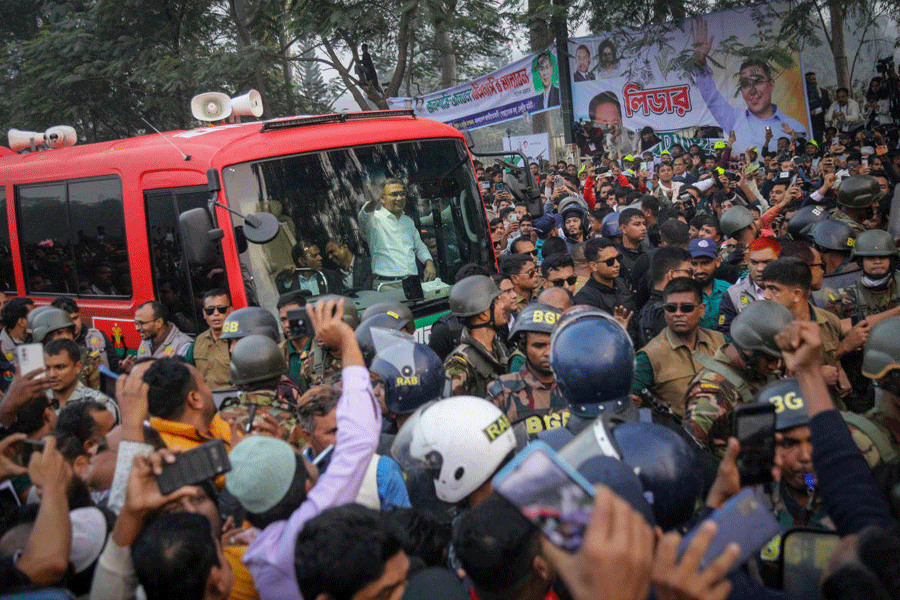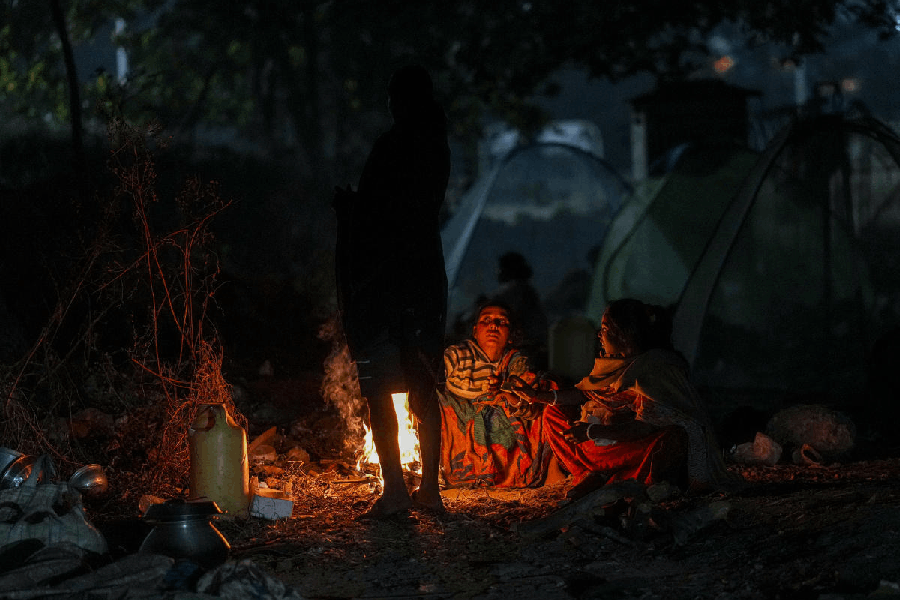A giant study on Covid-19 conducted in India has pointed to early deaths, high risk of transmission among children below 14 years and the oldest adults being surprisingly protected from the infection.The study has also revealed that the risk of secondary spread — an infected person spreading the virus — is much higher among occupants of shared vehicles during travel for six hours or longer than among people within households.
A team of nine health researchers and government officials analysed data from 575,000 contacts of 84,965 confirmed Covid-19 patients in Andhra Pradesh and Tamil Nadu to look for patterns of infection spread, mortality and the risk of exposure.
Scientists not associated with the analysis said they were impressed by the richness of the data.
“It is absolutely fantastic that two state governments have shared Covid-19 data for academic analysis,” Gagandeep Kang, a senior clinician-scientist and expert in infectious diseases at the Christian Medical College, Vellore, told The Telegraph.
Some community medicine specialists, including members of the Indian Public Health Association, have highlighted the Centre’s failure to make data available for independent analysis despite the country witnessing more than 6.2 million Covid-19 infections and 97,000 deaths.
The study has generated evidence for a strong transmission risk among similar-age contacts, with the highest such risk among children aged 14 years, which the researchers believe could be driven by social interactions such as those in shared play spaces.
While worldwide data have established that most infected children remain asymptomatic or develop only mild symptoms, scientists have been debating children’s capacity to spread the infection.
“We have compelling evidence that children are efficient transmitters,” Ramanan Laxminarayanan, a public health researcher and director of the US-based Centre for Disease Dynamics Economics and Policy who led the study, told this newspaper.
The new study, published in the US journal Science on Wednesday, found that half of 5,733 Covid-19 deaths in Andhra Pradesh and Tamil Nadu occurred within six days of diagnosis and 1,042 (18.2 per cent) within 24 hours or even before a test result.
The observed time-to-death after the diagnosis is shorter than the average of 13 days reported from the US or at least two weeks from China and indicates that a substantial proportion of patients in the two states were diagnosed late.
“Covid is among the trickiest diseases to diagnose only through symptoms,” Shankar Reddy Dudala, a community medicine specialist and a study team member from Andhra Pradesh, told this newspaper. Many patients, he said, reached hospitals only after they had developed severe breathlessness.
Before suffering breathlessness, the patients often had mild fever, cough, sore throat, body pain, loss of appetite, stomach pain or just hiccups, he said.
Their analysis revealed significant differences in the risk of spread in different exposure settings. The chance of someone picking up the infection if exposed to an infected patient was 1.2 per cent in healthcare settings, 2.6 per cent in the community, 9 per cent within households and 79 per cent if travelling in the same vehicle for six hours or longer.
About 31 per cent of the infections occurred in people below 30 years and the deaths were concentrated between ages 50 and 64 years. Among a group 124,000 cases, the overall case fatality rate was 2.06 per cent — 0.054 per cent among patients aged between 5 and 17 years, increasing with age to 16 per cent among patients aged 85 or older, the rise in line with observations in other countries.
“Unlike observations in high-income countries, the incidence of reported cases does not increase with older age,” said Ramanan, who collaborated with researchers at the Johns Hopkins School of Public Health and the University of California, Berkeley, for the study.
The researchers say it is possible that the stringent stay-at-home orders for the elderly has reduced their risk of exposure. But they say it is also possible the oldest people in India enjoy a “survivability bias” rooted in a socio-economic advantage, reflected by their survival to very old age in a country where life expectancy is 69 years, compared with 77 years in China, 79 years in the US and 83 years in Italy.
“This is a novel finding — we need to understand this better, but it is possible that better nutrition or overall health or their socio-economic status somehow confers the oldest people in the country some protection from exposure,” Dudala said.
Scientists say the study’s findings — the early deaths, the high risk of spread through shared travel and efficient transmission between children — could guide policy decisions to control the epidemic.
“Transmission within children would need to be considered while making policies on opening schools,” said Shahid Jameel, a senior virologist in India. “This study reinforces the criticality of making available public health data for analysis in real time.”
He added: “By now, India should have had comparable data across most states so that even regional and sub-regional differences could be identified. Sensible policy can only be formulated when high quality data is available in a timely manner.”
The other study members were epidemiologists Joseph Lewnard from the University of California, Berkeley; Brian Wahl from Johns Hopkins; S. Neelima from Andhra Pradesh and K. Gopal, Chandra Mohan, K.S. Jawahar Reddy and J. Radhakrishnan, senior government officials from Andhra Pradesh and Tamil Nadu.












